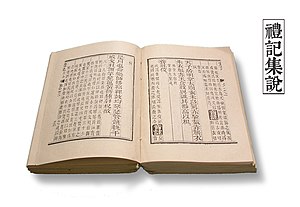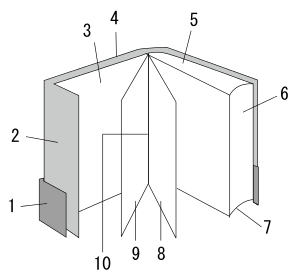Headpiece (book illustration)

Headpiece (also spelled head-piece), is a decoration printed in the blank space at the beginning of a chapter or other division of a book, usually an ornamental panel, printer's ornament or a small illustration done by a professional illustrator.[1]
The use of decorative headpieces in manuscripts was inherited by the medieval West from late Antique and Byzantine book production, and enjoyed particular popularity during the Renaissance.[2]
Headpieces, sometimes incorporating a rubric or heading, as well as Zoomorphic and anthropomorphic motifs were used widely in manuscripts and in editions of the Bible in the 15th century.
Similarly, a tailpiece is located at the end of a chapter or section.
Notes and references
- ^ Joan M. Reitz. "ODLIS Online Dictionary for Library and Information Science". ABC-CLIO. Retrieved 19 September 2013.
- ^ Michelle P. Brown (1994). "Understanding Illuminated Manuscripts: A Guide to Technical Terms". Malibu: J. Paul Getty Museum in association with The British Library. Retrieved 19 September 2013.
See also
 Media related to Headpieces (book illustration) at Wikimedia Commons
Media related to Headpieces (book illustration) at Wikimedia Commons Media related to Tailpieces (book illustration) at Wikimedia Commons
Media related to Tailpieces (book illustration) at Wikimedia Commons- Page header
- Illustrated manuscripts
- Initial
- Miniature


